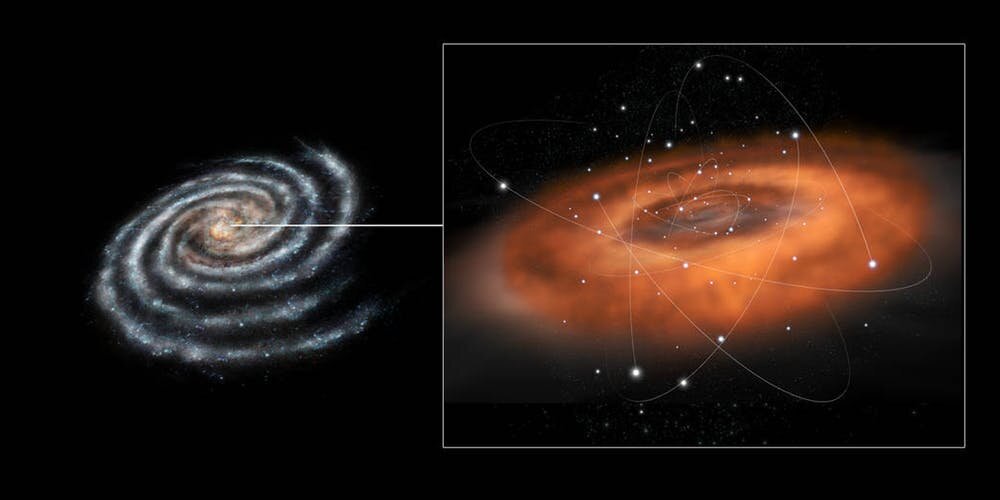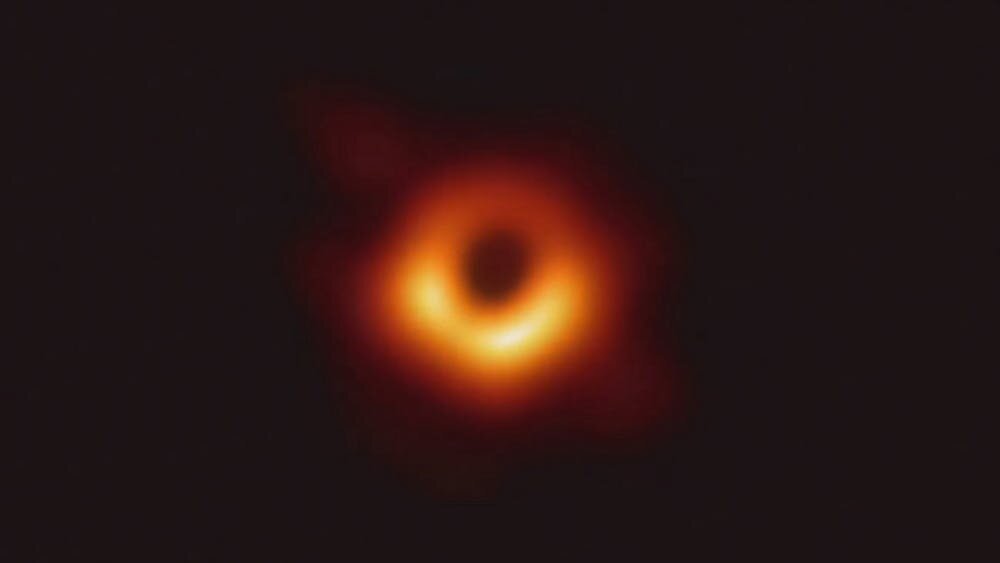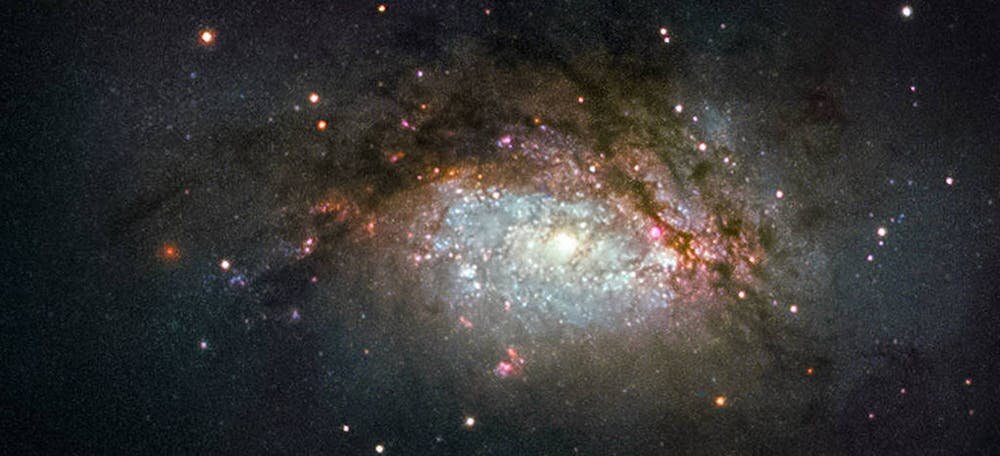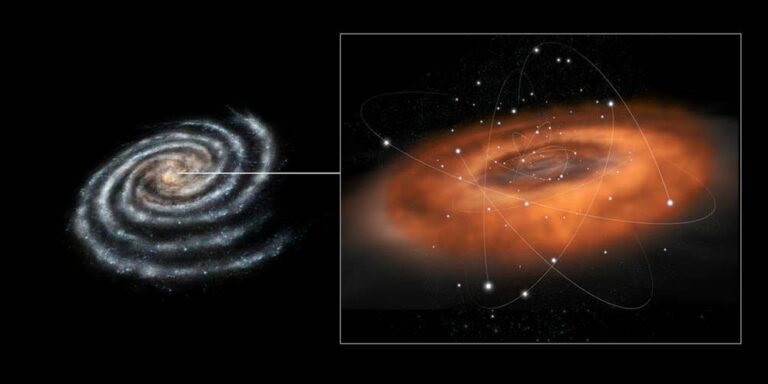The Central Supermassive Black Hole in Our Galaxy Might Have a Companion
The presence of supermassive black holes having companions is highly likely based on the nature of galaxy formation. As an astrophysicist, I am deeply fascinated by various theoretical aspects of astrophysics, ranging from the origins of the earliest galaxies to the gravitational interactions involving black holes, stars, and even planets. Supermassive black holes, in particular, captivate my attention due to their extraordinary characteristics and the dense stellar environments that envelop them, making them one of the most extreme locations in our vast universe.
Within our own galaxy, there exists a supermassive black hole known as Sgr A*, residing at its core. This colossal black hole possesses a mass approximately 4 million times greater than that of our Sun. A black hole is a celestial entity where gravity is so immensely powerful that neither particles nor light can escape its grasp. Surrounding Sgr A* is a densely populated cluster of stars. By meticulously observing the orbital patterns of these stars, astronomers have successfully confirmed the existence of this supermassive black hole and accurately determined its mass. Over the course of more than two decades, scientists have diligently monitored the movements of these stars around the supermassive black hole. Based on our observations, my colleagues and I have deduced that if there is a companion present, it is likely to be another black hole in close proximity, with a mass at least 100,000 times that of the Sun.
Supermassive black holes and their friends
Most galaxies, including our own Milky Way, possess a supermassive black hole at their core, with masses ranging from millions to billions of times that of the Sun. The reason behind why supermassive black holes are often found at the heart of galaxies is still being investigated by astronomers. One popular theory suggests that these supermassive black holes may have companions.

To comprehend this theory, we must travel back in time to when the universe was approximately 100 million years old, during the era of the very first galaxies. These early galaxies were much smaller compared to the galaxies we see today, being about 10,000 times or more less massive than the Milky Way. Within these early galaxies, the first stars that died gave rise to black holes, ranging from tens to thousands of times the mass of the Sun. These black holes then gravitated towards the center of gravity, the core of their host galaxy. As galaxies evolve through mergers and collisions with one another, these interactions can lead to the formation of pairs of supermassive black holes, which is a crucial aspect of this narrative. Subsequently, these black holes collide and increase in size. A black hole that surpasses a million times the mass of our Sun is classified as supermassive.
If indeed a supermassive black hole has a companion revolving around it in a close orbit, the center of the galaxy becomes engaged in a complex dance. The gravitational pulls between the two partners also influence the nearby stars, causing disturbances in their orbits. The two supermassive black holes orbit each other while simultaneously exerting their own gravitational forces on the surrounding stars.
These gravitational forces from the black holes cause the stars to alter their orbits, meaning that after completing one revolution around the pair of supermassive black holes, a star will not return precisely to its initial point.
By utilizing the well-examined star, S0-2, which completes an orbit around the supermassive black hole positioned at the core of our galaxy every 16 years, we are able to dismiss the notion of a second supermassive black hole with a mass exceeding 100,000 times that of the Sun and located beyond approximately 200 times the distance between the Sun and the Earth. If such a companion were present, my colleagues and I would have already identified its impact on the trajectory of S0-2.
However, this does not imply that a smaller companion black hole cannot exist undetected. Such an entity might not significantly influence the orbit of S0-2 in a manner that can be readily quantified.

The physics of supermassive black holes
Supermassive black holes have recently garnered significant attention, particularly due to the recent image of a colossal black hole at the center of the M87 galaxy. This breakthrough has provided a fresh perspective on comprehending the physics underlying these enigmatic entities.
The close proximity of the galactic center of the Milky Way, a mere 24,000 light-years away, offers a distinctive opportunity to explore the fundamental physics of supermassive black holes. Astrophysicists, such as myself, are keen on unraveling their influence on the central regions of galaxies, as well as their role in the formation and evolution of galaxies. The detection of a pair of supermassive black holes in the galactic center would suggest that the Milky Way merged with another, potentially smaller, galaxy in the past.
Monitoring the surrounding stars yields more than just information. By measuring the star S0-2, scientists were able to conduct a unique test of Einstein’s general theory of relativity. In May 2018, S0-2 passed by the supermassive black hole at a distance of approximately 130 times the Earth’s distance from the Sun. According to Einstein’s theory, the wavelength of light emitted by the star should stretch as it ascends from the profound gravitational well of the supermassive black hole.
The observed stretching of the wavelength, as predicted by Einstein, causing the star to appear redder, confirms the accuracy of the theory of general relativity in describing the physics within this extreme gravitational zone. I eagerly anticipate the second closest approach of S0-2, which will occur in approximately 16 years. This upcoming event will enable astrophysicists, like myself, to further test Einstein’s predictions regarding general relativity, including the alteration of the stars’ elongated orbit. However, if the supermassive black hole possesses a companion, this could potentially impact the anticipated outcome.

In the event that there are two colossal black holes revolving around each other at the center of our galaxy, gravitational waves will be emitted, as my team proposes. The LIGO-Virgo observatories have been successfully detecting gravitational wave radiation from the merging of black holes and neutron stars since 2015. These groundbreaking discoveries have provided scientists with a new means of comprehending the universe.
However, the waves emitted by our hypothetical pair of black holes will have such low frequencies that they will go unnoticed by the LIGO-Virgo detectors. Fortunately, a space-based detector called LISA, which is currently in the planning stage, may have the capability to detect these waves. This detection will greatly assist astrophysicists in determining whether our galactic center black hole is solitary or accompanied by a companion.
This article is republished from PhysORG under a Creative Commons license. Read the original article.
Do not forget to share your opinion with us to provide you with the best posts !




0 Comments